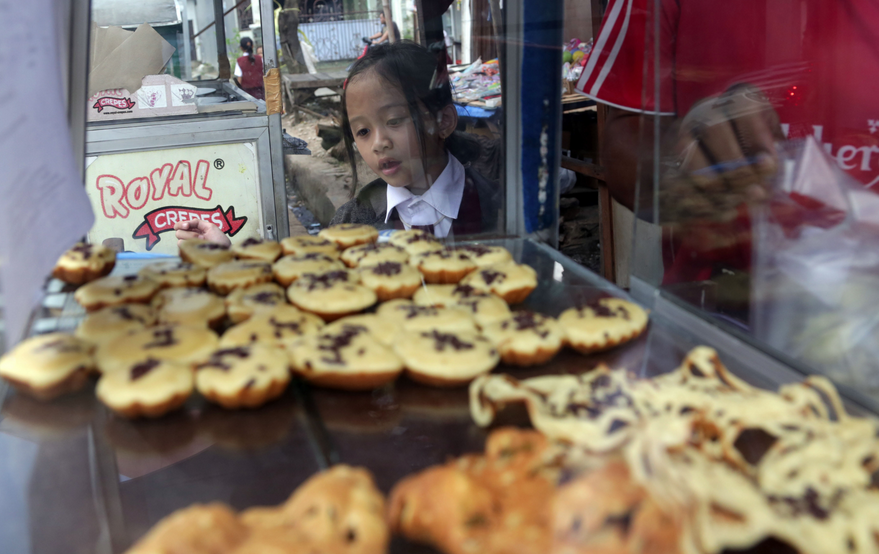
How to break the vicious cycle of poverty and academic failure is one of the most troublesome questions of our time, but this much we know: High-quality preschool helps children from poor families prepare for kindergarten and beyond. Yet as the child poverty rate is climbing, those are the kids least likely to attend such programs.
A new report by the research and advocacy group Voices for Illinois Children provides insight into the extent of the disparities in that state, along racial and economic lines. The findings are particularly stark for Latino children, only 40 percent of whom attended preschool in Illinois at most recent measure, compared with 58 percent of white children and 55 percent of black children. In Chicago, preschool enrollment was lowest on the northwest and southwest sides, both predominantly Latino, and highest on the affluent north side.
Given national concerns about Latino preschool access, “it wasn’t a surprising finding, but it’s important that people be aware of it,”said Larry Joseph, one of the report’s two authors. He and co-author Lisa Christensen Gee write that Latina mothers are in the workforce less than other groups, and children are more likely to live in households with extended family to care for them. That might be a reason they stay home at a time when research shows it would be beneficial for them to be in school. Other barriers include inconvenient program locations and immigration-related problems. Nonetheless, the authors note national surveys of Latino parents saying the most common reason they didn’t enroll their children in preschool was that they didn’t know what programs were available. Children who are native Spanish speakers particularly benefit from the language exposure in preschool, they say, but among Latinos, those with American-born parents are more likely to enroll than children of immigrants. State officials have been trying to provide more opportunities with new preschool construction and bilingual programs, but outreach is still needed and budget cuts are blocking progress.
Also in the important-but-not-surprising camp: Forty-four percent of young children in low-income Illinois homes attended preschool in 2012, compared with 60 percent in wealthier households. When the authors looked at different geographic regions, the gap extended across the entire state.
And that’s just access. Quality is another matter entirely, one much harder to measure, and not quantified specifically in the new report. But a national rating scale estimates that only about a third of preschool programs anywhere, public as well as private, qualify as “good.”Once again, look at class and race, and children from wealthier homes are more likely to attend good programs. African-American children are least likely to attend quality programs.
Illinois was a state celebrated when, in 2006, it set a goal of providing free quality preschool to any 3- or 4-year-old whose parents wanted it. But that never quite happened, the program title Preschool for All notwithstanding. Funding peaked at $327 million in 2009, with 95,000 children from low- and moderate-income families enrolled. Since then, budget cuts have wiped out the gains, and enrollment statewide dropped to 70,000 kids, targeting the neediest. Last year, the budget was down to $241 million. Annual spending per child declined from $4,018 in 2009 to $3,153 in 2013.
Grim though the situation may be, Illinois fares better than the nation at large in a few key areas. Fifty-four percent of all its 3- and 4-year-olds were enrolled in school in 2012, versus 48 percent nationally. The state’s 44 percent preschool enrollment rate in low-income families is better than a national rate of 37 percent. When Joseph and Christensen Gee compared the 12 largest states, Illinois also did well in terms of its policies to promote preschool quality: the maximum class sizes and minimum teacher qualifications mandated, for instance. How closely those mandates are followed in practice, particularly in times of budget cuts, again is another matter. (The state is using federal Race to the Top money to improve quality control.)
And Illinois got low marks for cutting its preschool budget the past few years, rounding out the bottom of the 12-state rankings for per pupil spending with Florida and Texas. Those two states did poorly for both their preschool-friendly policies and funding while New Jersey topped both categories. In New Jersey, reform was spurred by a lawsuit. In Illinois, advocates are still asking for change.
This story was produced by The Hechinger Report.
